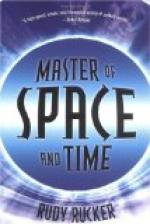This strange, wireless telephone was so arranged that a search-light beam could be used for the light path, and distances up to three miles were covered. Even with this limited range the search-light telephone had certain advantages. Its message could be received only by those in the direct line of the light. Neither did it require aerial masts or wires and a trained telegrapher who could send and receive the telegraph code. It was put to some use between battle-ships and smaller craft lying within a radius of a few miles. The sensitive selenium cell proved unreliable, however, and this means of communication was destined to failure.
The experimenters realized that future success lay in making the ether carry telephonic currents as it carried telegraphic currents. They succeeded in establishing communication without wires, using the same antenna as in wireless telegraphy, and the principles determined are those used in the wireless telephone of to-day. The sending apparatus was so arranged that continuous oscillations are set up in the ether, either by a high-frequency machine or from an electric arc. Where set up by spark discharges the spark frequency must be above twenty thousand per second. This unbroken wave train does not affect the telephone and is not audible in a telephone receiver inserted in the radio receiving circuit. But when a microphone transmitter is inserted in the sending circuit, instead of the make-and-break key used for telegraphy, the waves of the voice, thrown against the transmitter in speaking, break up the waves so that the telephone receiver in the receiving circuit will reproduce sound. Here was and is the wireless telephone. Marconi and many other scientists were able to operate it successfully over comparatively short distances, and were busily engaged in extending its range and improving the apparatus. One great difficulty involved was in increasing the power of the sending apparatus. Greater range has been secured in wireless telegraphy by using stronger sending currents. But the delicate microphone would not carry these stronger currents. Increased sensitiveness in the receiving apparatus was also necessary.
Not content with their accomplishments in increasing the scope of the wire telephone, the engineers of the Bell organization, headed by John J. Carty, turned their attention to the wireless transmission of speech. Determined that the existing telephone system should be extended and supplemented in every useful way, they attacked the problem with vigor. It was a problem that had long baffled the keenest of European scientists, including Marconi himself, but that did not deter Carty and his associates. They were determined that the glory of spanning the Atlantic by wireless telephone should come to America and American engineers. They wanted history to record the wireless telephone as an American achievement along with the telegraph and the telephone.




